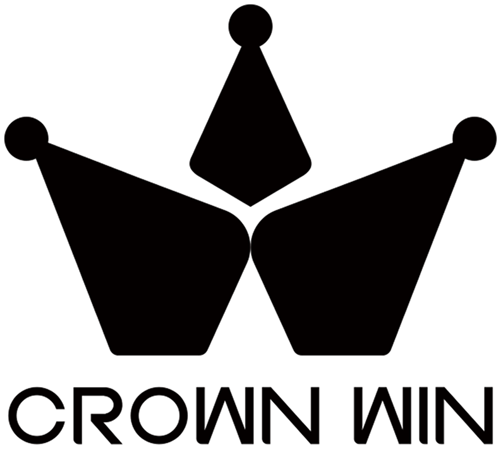Introduction
Your fashion packaging is not just a wrapping material in this competitive fashion world; it is a physical touch point with your customers, the first touch point of your brand. When one receives your package, they have an emotional connection, which can propel a one-time buyer to a brand advocate. Brand experience also refers to the experience you get by anticipating the receipt of something (cloths), the feel of nice material and the visual revelation of what you created.
Here you will find creative packaging concepts that range all the way from environmentally friendly materials to luxurious finishes and useful e-commerce tools to striking displays in the retail outlets. We will discuss how varying packaging strategies will be able to convey your brand values, acclaim customer satisfaction, and even increase your bottom line. Throughout this post, you will have gained a set of practical tips and strategies that will help you transform your clothing packaging and make unboxing stories that your customers can no longer be patient to reveal.
What is Clothing Packaging?
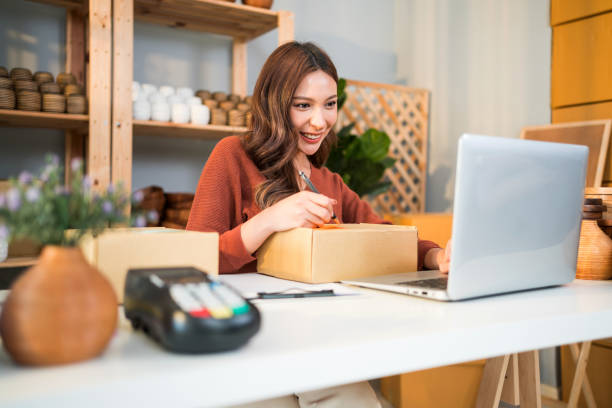
Clothing packaging refers to all the elements that package or contain your clothes, from the outer shipping package or mailer that shows up on the doorstep of your customer to the inner protective wrap, hang tags, care labels, and branded accessories inside. This is a holistic system that has more than just product protection.
In its simplest sense, the role of clothing packaging is to act as a protector of your goods in transit and storage to avoid their destruction, dampness, and pollution. Its role is, however, extended to the presentation, where packaging is used as a canvas to narrate a story and communicate the brand. Each design decision made, such as the type of materials used or the color scheme, conveys messages regarding who your brand is, what its core values are, and what place it occupies in the market. Modern packaging works as a sustainability statement too, showing how you are a responsible citizen when it comes to the environment, and selecting your materials and design philosophy appeals to more eco-conscious customers.
Trending & Sustainable Packaging Ideas
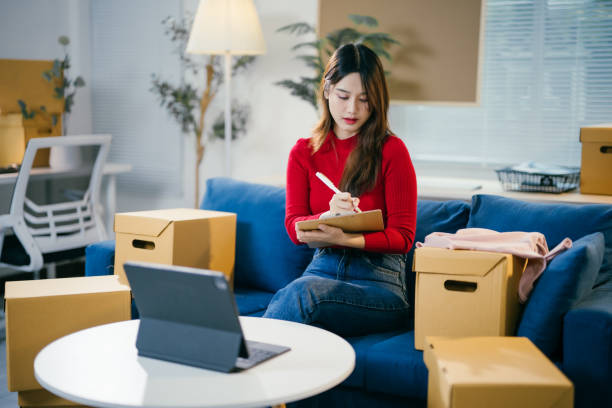
Environmental consciousness of the fashion industry has led to a revolution in sustainable packaging systems that do not affect the fashion or functional aspect. The recycled and upcycled materials are taking this front seat and kraft paper created using post-consumer waste is both sustainable and natural in its look and feel. These materials give the effect of authenticity and artisanship that appeals especially to conscious consumers and artisan brands.
Another step forward is the use of biodegradable and compostable mailers, where the customers will be able to dispose of the packaging without the sense of the guilt and, at the same time, maintain the standards of the packaging that will be necessary to ensure the safety of the shipping. The sustainable mails consist of plants and protective films of cornstarch that are gaining momentum in place of popular petroleum-based products. Minimal and zero-waste design is also currently popular and is focused on eliminating unnecessary layers and components and maximizing the utilization of packaging elements.
Refuse packaging is causing some exceptional buzz in the market, with cloth drawstring bags, canvas totes, and fabric pouches doubling as preservative wrappings and treasured giveaways to the customer. The solutions make packaging more than waste; they make it a useful accessory that can be seen and used to enhance the presence of the brand as well as customer interactions. FSC-certified papers, soy-based inks, and water-based adhesives can be used by brands aiming at eco-luxury positioning, as they are appealing to the eye and have environmental credentials.
Packaging for Online Stores (E-commerce)
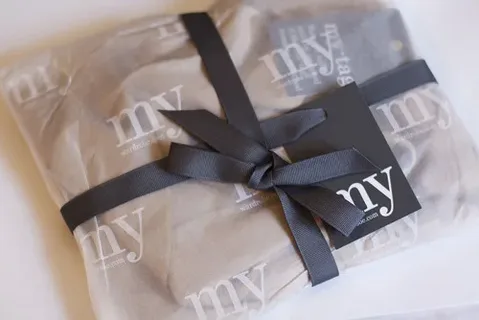
The packaging of e-commerce clothing has its own challenges to solve, where multiple priorities must be chosen: it should not be damaged during transit, be cost-efficient, present the brand to the client, and the customer experience. Whether to use lightweight mailers or rigid boxes can sometimes determine your whole approach to packaging, and each alternative will offer its own unique benefits based on your product mix and brand positioning.
Poly mailers are cost-effective and minimize the shipping weight; thus, they are suitable for soft products such as t-shirts, leggings, and other casual apparel. Nonetheless, they do not have many branding options, and thus, innovative ideas, such as printing on demand, custom inserts, or higher-quality liner materials, are needed to preserve high-quality presentation. Corrugated boxes are best in terms of protection and large branding real estate; however, they are expensive and incur weight shipment penalties that may affect overall profitability.
The interior package experience is a massive chance to distinguish its brand with the help of well-selected tissue paper, a specially designed thank-you card, care instructions, and stickers or tapes using its brand. These points will offer levels of revelation, extend the unboxing experience and reinforce brand messages, and inspire social media posts. Strategic applications of the void fill material in the form of environmentally friendly paper shreds, branded tissue paper, or protective air pillows can be developed, which will assist in transforming the necessary functional components into brand touchpoints.
Packaging for Retail Stores & In-Person Sales

The retail environments require products to be mobile brand ambassadors and at the same time, convenient to the customers who move about the stores and carry their goods. One of the most apparent and long-term brand touchpoints will be shopping bags, and low-cost sustainability will be offered as well by kraft paper bags, as well as non-woven polypropylene bags, which will also be durable and reusable to expand brand presence.
The retail environments demand items that serve as mobile brand ambassadors and are convenient to your customers who have access to gift wrapping services. Quality gift bags will boost your sales and position your brand as the gifting destination of choice. Seasonal change of packaging, e.g., holiday colors, occasion-specific packaging, or packaging of a campaign can define urgency and collectability that can both help to make a sale and social media interactions. Another thing that can be considered is the issuance of different sizes and styles of bags to match the quantity of purchases and the occasion’s needs.
The display packaging in the store is employed to guard the product as well as to sell the product as an image. The window boxes also allow the customer to view the product with the perceived benefit of cleanliness and safety, as compared to hanging garment bags on the delicate products during browsing and transportation. These solutions should be in tune with the decor of your shop, and easy accessibility and visualization of the products by the buyers and workers.
Premium / Luxury Apparel Packaging
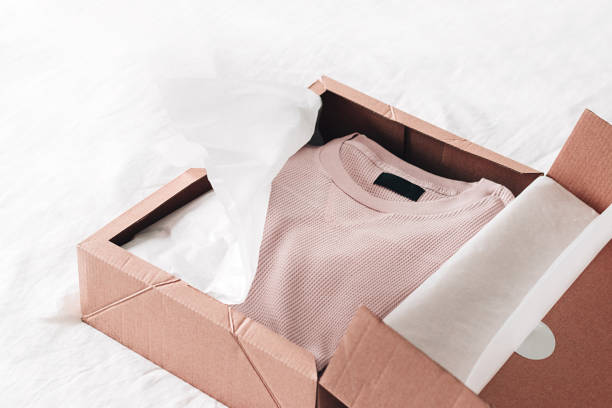
The luxury clothing packaging increases the entire brand experience by attentively selecting materials, finishes, and presentation layers by way of create justified premium pricing and long-lasting impressions. Dust bags and protective sleeves have both practical and aspirational purposes, as they are the means of offering long-term care to the garment and remind them of the brand relationship daily.
The choice of material is the most critical in the context of luxury packaging, but a wide range of materials is offered: soft-touch paper stocks and fabric-lined boxes, magnetic closure systems, or ribbon pull tabs, which are pleasing to touch. Visual and textural effects is advanced foil stamping, embossing, de-bossing, and spot UV finishes that reflect professionalism and attention to detail.
The luxury unboxing experience should be more of a theatrical performance in which it is executed in a few strata of discovery that translate to anticipation and make the act photograph. It has some extra features, including custom wrapping of the tissue, ribbon ties, wax seals, or fancy card presentation, which can be taken into account to transform the simple process of getting a package into a memorable ceremony, which customers associate with some special occasions and indulging in something special.
Packaging Accessories & Extras That Elevate the Brand
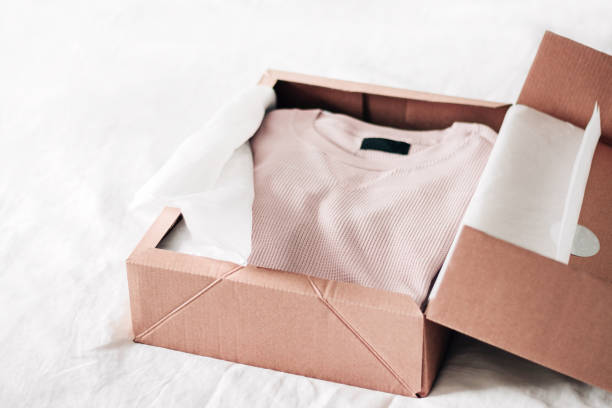
The differentiation between decent packaging and superior packaging is often in the details and the accessories that are thoughtful and are about the customer experience. Custom printing on tissue paper is an all-purpose garment cover that can be utilized in order to prevent wrinkles and provide the product with a glamorous background and social media photographs.
Good tissue paper leaves the customers with a lot of weight in their hands and can be reused by wrapping gifts, making the brand visible to the customer even after the first use. Tape and stickers with branding offer a fairly cheap way of customizing things, which could be applied to any kind of packaging. Plain shipping boxes can be made branded with custom tape, and it is possible to make it personal with sticker sets, and change to a new season or promotion without using money on an entirely new inventory of packages.
Hang tags and care cards are the little-recognised alternative to enumerate brand values, care directions, and other product-related information in forms customers can little but stash with their clothing. They may be styling recommendations, fabric details, sustainability, or use advice that assists the purchasers to sustain their items and gain more interest in the quality of goods.
The thank-you notes and the promotional inserts open a possibility of direct communication with the customers that is personal and not transactional. Such touches may be discounts on future purchases, encouragement of social media communication, tips on how to care, or even a show of genuine appreciation of the business of customer that forms emotional attachments and leads to re-buying.
Key Considerations When Choosing Packaging
The right decisions regarding the packaging should be made based on the critical analysis of diverse factors, which define the customer experience and business operations. Initial packaging choices would be made according to the nature of the product; fragile fabrics will require special coverings, whereas durable denim will require multiple solutions, and oversized winter jackets will require different solutions as compared to lightweight summer dresses. Consider the weight of the clothing, compression capacity, and special handling requirement in making the decision on the packaging.
The packaging options must be in line with the brand identity and positioning, such that the message will be consistent and the customer will not be expecting anything. The difference between minimalist and luxury brands is that minimalist brands only use basic and clean packaging, which is eco-friendly and focuses on the simplicity of the brand, and luxury brands require costly materials and finishes, worth the high price point.
Bold colors, playful patterns, or engaging features can be used as a means of expressing brand personality to brands aimed at the young or playful, and can be used to show cost, but the costs are not only the unit price; there is also the question of shipping implications, storage, and scalability. Light packaging also helps to save shipping and may result in the necessity to introduce additional security.
A flat-pack storage is the most effective type of storage in a warehouse, but it limits the range of design. There may be a tradeoff between wanting to be custom printed and the financial limits of printing small runs and mass production runs, which may be more costly per unit.
Sustainability and environmental regulations are having a growing impact on packaging choices as regulatory policies and preferences of consumers towards environmentally friendly packages change. Examine the local recycling capacity, compost systems, and the new regulations that can affect the packaging decision. When choosing sustainable options, take into account lifecycle environmental impact as opposed to end-of-life disposal.
Where & How to Source Good Packaging Suppliers
The key to finding an appropriate packaging supplier is to find a balance between a range of factors, including quality, price, minimum order quantity, customization, and reliability of the services. Local vendors are advantageous in terms of communication, faster delivery, and reduction of minimums, which is effective when launching a new brand or testing new packages.
However, international manufacturers, particularly those present in packaging facilities, are more likely to provide superior economic advantages and greater customization properties to support the growth in lead time and minimum orders, particularly with smaller brands or with a large number of products requiring many different types of packaging.
Give the suppliers a bargain over the flexibility of MOQ, setup costs, and the opportunity of combining orders of different kinds of packaging to get a higher degree of pricing. Depending on the suppliers, the bargain can be discussed as far as simple logo printing and as far as foil stamping, embossing, or the ability to change a structure in general. Request every supplier to give detailed capability sheets and sample portfolios so as to be aware of their strengths and weaknesses.
The current and future development plans and needs are also important considerations in customization to remember and pay attention to during the working process with any supplier; however, in this situation, the direct supervision can be rather unrealistic. Formulate the specification of quality, sample of pre-production to ensure consistency, and introduce an incoming inspection process that assists in detecting inconsistencies before they are exposed to customers.
Case Studies / Examples
Sustainable Excellence: Patagonia demonstrates that one can encourage innovations in packaging with the concepts of environmental values and the maintenance of functionality. The same recycled content mailers and low level of ink coverage, and clear packaging instructions make them have a packaging that supports brand values and concurrently offers adequate protection to the product. The simple and informative appearance conveys the sense of being genuine and eco-friendly, which will be greatly identified by their target market.
The Art of Luxury: Hermes packages their products in the best way possible: the orange box, the silk ribbon, and the sharp focus on every detail, including the quality of the tissue paper and the way the boxes are made. Every aspect of the package supports the fact that the brand is the leading example of luxury craftsmanship, and it is worth premium prices to provide the customers with the unboxing experiences they will value and share. The uniformity of all the packaging aspects brings about instant brand awareness and strengthens exclusivity.
Mass Market Innovation: UNIQLO demonstrates that luxury budgets are not needed to package products in an efficient way by their clean and functional way of packaging products, focusing on visibility and handy convenience. Their plain paper bags full of clean typography and wise use of colors form a sophisticated presentation and, at the same time, are cost-effective enough to fit into their affordable pricing strategy. Quality and thoughtfulness are delivered by the packaging without any complications or costs that are not absolutely necessary.
Conclusion
It is not a mere tool of practical necessity but a powerful brand communication tool that builds the image of customers, generates emotional adhesion and buys a product after the initial order. Whether you are building a sustainable business, or building a luxurious brand, or building on an existing business, the choice of packaging could have a significant impact on customer satisfaction, brand loyalty, and social media presence. Get a stop and take an audit of your current packaging strategy, identify one or two short-term solutions that may be implemented that can fit your brand values and budget, and begin implementing changes that will change how your customers experience yourself. The concept of post-processing your evolutions of packaging with your community, including before and after shots, reviews, and quantifying sustainability are all interesting material that builds authenticity to the brand and encourages the rest of the audience to begin their own packaging experiences.
